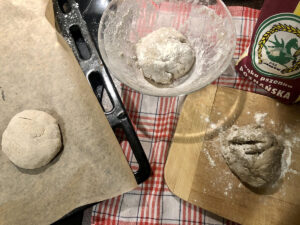Home-made yeast rolls
Author: Klaudia Buczek, MSc Eng., food technologist, dietitian
Ingredients:
- 1 cup and 3 tablespoons wheat flour
- 1 cup rye flour
- 1 cup milk
- 25 g fresh yeast
- 1 tablespoon rapeseed oil
- 1 tablespoons sugar
- 1 tablespoon Himalayan salt
Method:
- Proof the yeast: crush yeast in a bowl, add 1/4 cup of milk, 1 tablespoon of sugar and 3 tablespoons of wheat flour.
- Mix the ingredients well, cover with a cloth and leave for 20 minutes in a warm place.

- Place wheat flour and rye flour in a large bowl, add oil, salt, the remaining milk and yeast.
- Knead the dough and form 4-5 rolls.
- Place the rolls on a baking tray and leave them for 20 minutes.

- Bake for 20-25 minutes in the oven preheated to 200 C.

 EN (PLN)
EN (PLN) EN (GBP)
EN (GBP) EN (EUR)
EN (EUR)